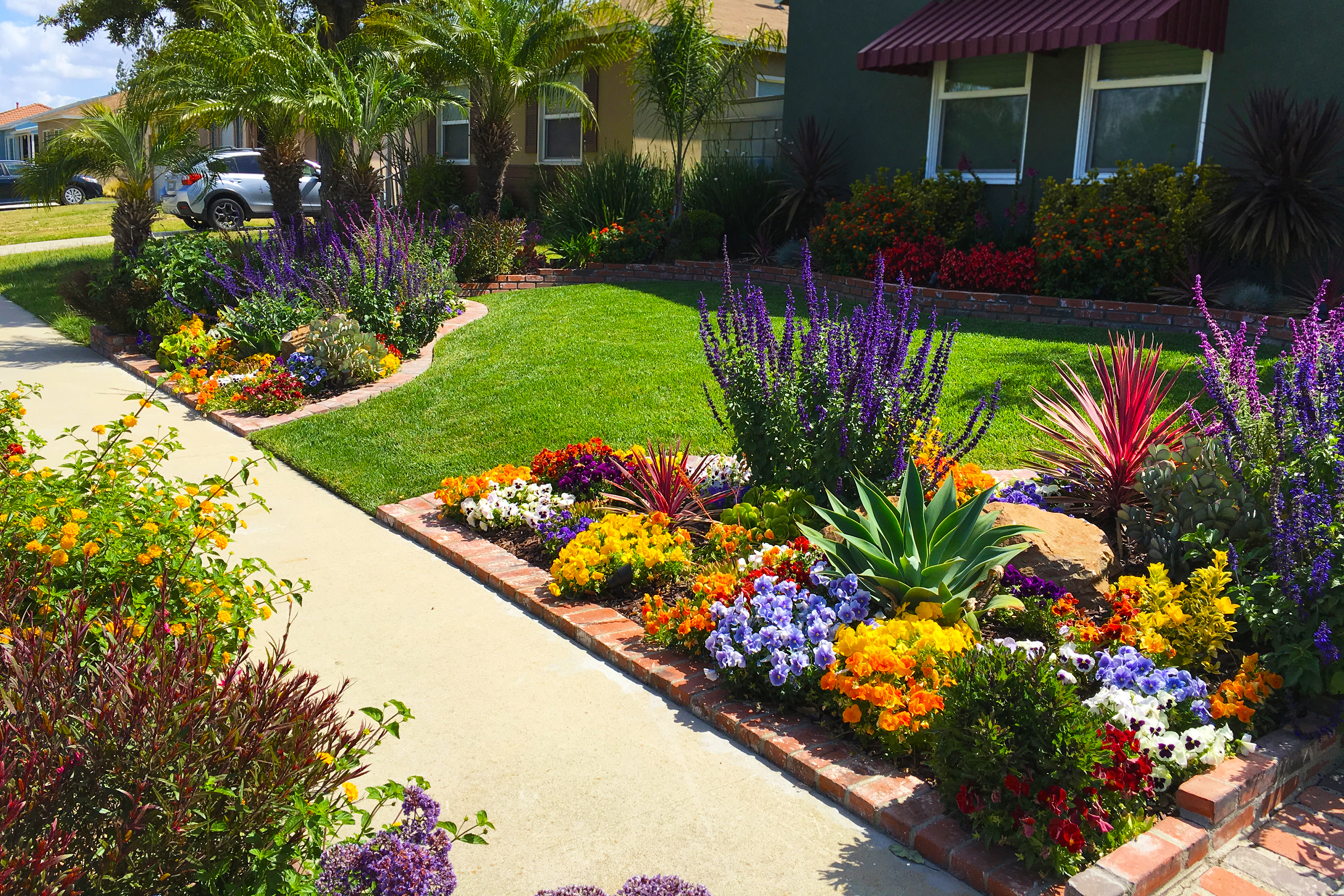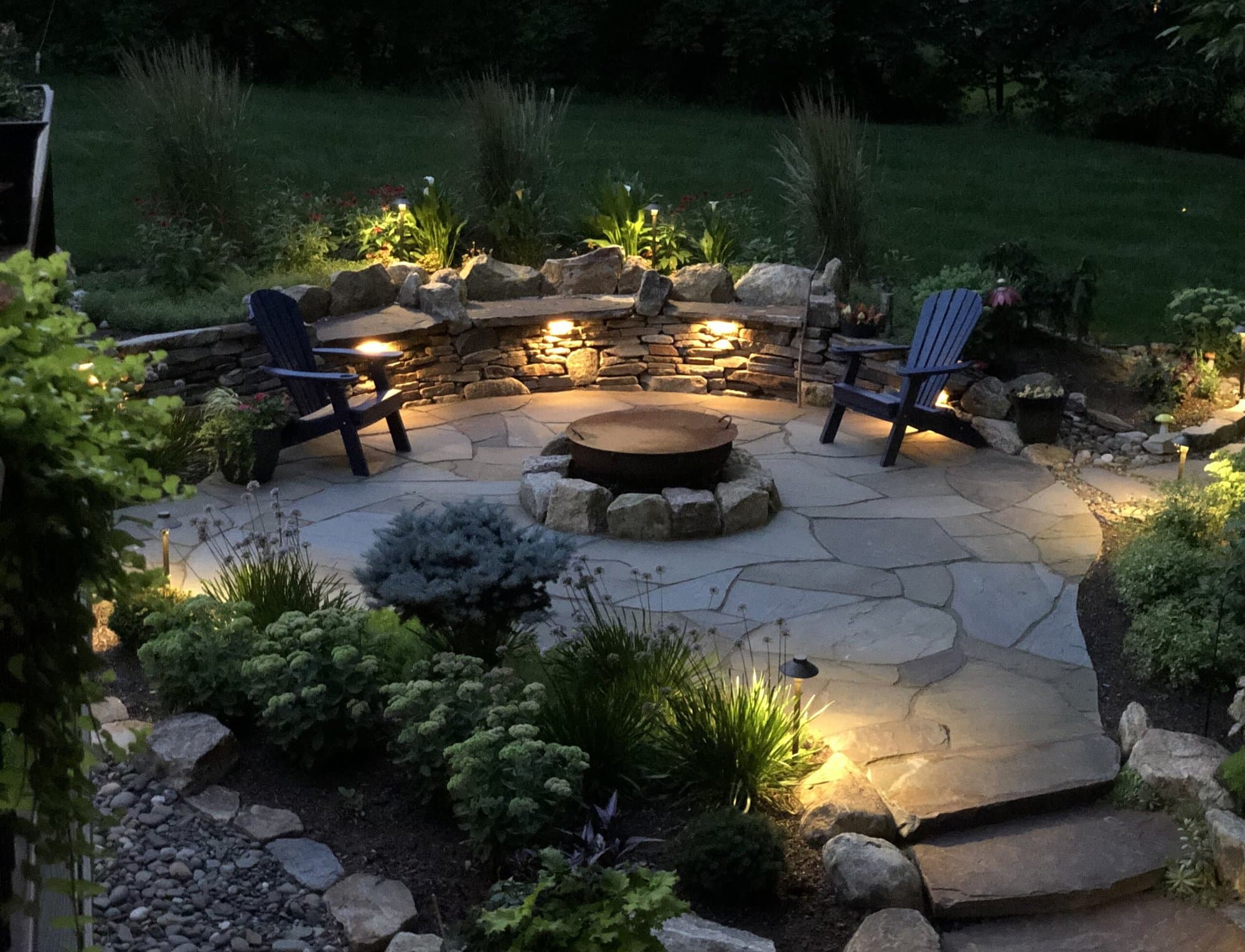Explore Creative Solutions with Specialist Palm Desert Landscaping
Explore Creative Solutions with Specialist Palm Desert Landscaping
Blog Article
A Comprehensive Guide to Designing and Implementing Effective Landscape Design Solutions
The art and scientific research of landscape design extend beyond plain looks; they include a thoughtful integration of design concepts, environmental stewardship, and functional implementation. A comprehensive overview to effective landscape design options begins with an in-depth understanding of your exterior room, stressing the significance of balance, unity, and proportion. As we explore lasting methods and the option of proper flora, the effects for biodiversity and community health become increasingly evident. What approaches can one utilize to ensure these landscapes not only prosper however additionally flourish in consistency with their surroundings?

Understanding Landscape Layout Concepts
One might question what foundational components add to effective landscape style. At its core, successful landscape layout hinges on several vital principles that guide the plan and selection of aspects within a space. These principles consist of unity, balance, rhythm, and percentage, each offering to produce an unified outside setting.
Unity refers to the natural relationship amongst various components, making certain that they collaborate aesthetically and functionally. Equilibrium can be accomplished via unbalanced or symmetrical plans, permitting the landscape to feel secure and inviting. Proportion includes understanding the scale of aspects in connection with each other and the surrounding atmosphere, advertising visual harmony and convenience.

Assessing Your Outdoor Area
Prior to applying the principles of landscape style, a thorough evaluation of your exterior space is crucial. This preliminary examination aids specify the scope of your landscaping job and makes sure that your layout straightens with the unique attributes of your residential or commercial property. Begin by examining the measurements of your room, taking specific dimensions to understand the available area for various elements such as patio areas, paths, and yards.
Following, observe the existing attributes of your landscape, consisting of topography, dirt high quality, and drain patterns. These elements considerably influence plant selection and positioning. In addition, analyze the sunshine exposure across different locations throughout the day, as this will certainly affect the types of plants that flourish in your garden.
Take into consideration the microclimates developed by frameworks, trees, and other obstacles, as they can influence temperature level and moisture degrees. Lastly, make note of any type of existing plants or hardscape components that you want to remove or preserve. This comprehensive analysis lays the foundation for a efficient and well-informed landscape design option, making sure that your design is not just aesthetically pleasing yet lasting and likewise useful for many years to come.
Sustainable Landscaping Strategies
Incorporating lasting landscaping strategies is important for developing an ecologically liable outdoor room. These practices not just advertise ecological equilibrium yet likewise boost the useful and aesthetic value of a landscape. One fundamental method is the usage of indigenous plants, which call for much less water and maintenance while sustaining neighborhood wildlife. Executing reliable irrigation systems, such as drip irrigation, decreases water waste and ensures that plants get adequate moisture.

An additional reliable method is the critical placement of trees and bushes to provide natural windbreaks and color, hence lowering energy expenses (Palm Desert Landscaping). Rain yards can be incorporated right into the landscape design to handle stormwater drainage effectively, filtering contaminants prior to they get in rivers
Choosing the Right Plants
Choosing the right plants for your landscape is critical to achieving both visual allure and ecological harmony. The process begins with an understanding of your local climate, soil conditions, and the certain microenvironments within your landscape. Analyzing variables such as sunlight exposure, moisture levels, and existing flora will certainly aid you pick plants that grow in your unique setup.
Consider incorporating native plants, as they are well-adapted to local problems, call for much less upkeep, and assistance regional wildlife. Furthermore, choosing a diverse array of species can enhance biodiversity while reducing the risk of condition and parasite episodes. It is important to review the development routines, growing durations, and seasonal shades of prospective plants to produce a vibrant and cohesive landscape.
Additionally, consider the planned usage of the area; for example, if the area will certainly experience high foot website traffic, choose resilient ground covers. By thoughtfully picking plants that line up with both your aesthetic objectives and ecological needs, you can produce a sustainable landscape that not only boosts your building however also adds positively to the surrounding ecological community.

Execution and Upkeep Techniques
When the appropriate plants have been picked for your landscape, the emphasis shifts to efficient execution and recurring maintenance techniques. Effective installment starts with proper site preparation, that includes dirt screening to figure out nutrient levels and pH, complied with by changing the dirt as needed. Very carefully organize plants according to their development behaviors and light requirements, ensuring sufficient spacing to promote healthy growth.
Irrigation is an essential component of execution. Develop a watering schedule that considers the specific requirements of each plant varieties, readjusting for seasonal adjustments. Making use of drip watering systems can boost water performance and minimize overflow.
Upkeep methods need to be carried out to make sure the durability and vitality of your landscape. Routine tasks include weeding, mulching, and pruning to control development and protect against condition. Fertilization ought to be conducted based on dirt examinations, offering the required nutrients without over-fertilizing.
Keeping track of for bugs and diseases is necessary; early detection can avoid significant link damages. Finally, seasonal adjustments to upkeep regimens, such as preparing and winterizing perennials for spring development, will ensure that your landscape stays healthy and aesthetically attractive year-round.
Final Thought
In conclusion, efficient landscape design remedies need a comprehensive understanding of layout principles, careful see this page assessment of outside rooms, and the application of sustainable strategies. The selection of proper plant species plays an important role in improving visual appeal and environmental strength - Palm Desert Landscaping. Successful application and recurring upkeep even more guarantee the long life and vigor of landscapes. By integrating these aspects, landscapes can be changed right into gorgeous, practical settings that promote biodiversity and contribute positively to neighborhood well-being.
One could question what fundamental components contribute to effective landscape style. At its core, successful landscape style hinges on a number of crucial concepts that assist the plan and choice of aspects within an area.Picking the right plants for your landscape is essential to attaining both visual appeal and environmental harmony. It is important to assess the growth practices, flowering periods, and seasonal colors of potential plants to create a cohesive and vibrant landscape.
When the best plants have been chosen for your landscape, the you could look here emphasis changes to efficient application and ongoing maintenance approaches.
Report this page